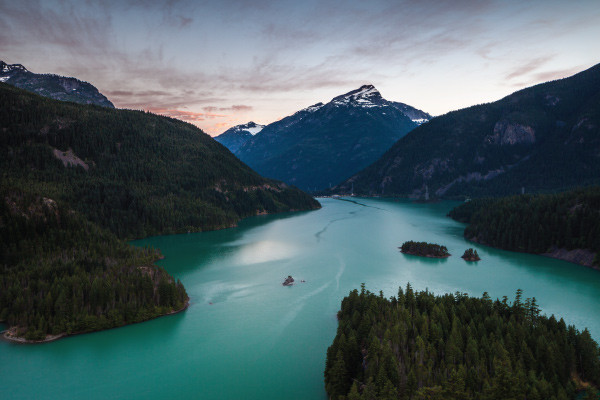Insider’s Guide to North Cascades National Park
Posted by Abbie Mood on 29th Oct 2021
It can be hard to believe that in less than three hours, it's possible to leave the urban landscape of Seattle, Washington and be transported to the alpine landscape at North Cascades National Park. Often called the “American Alps”, the park is one of three units that make up the North Cascades National Park Service Complex. Though there is evidence that the region has been inhabited by humans for the past 10,000 years, the first white explorers entered the area in the 1800s. At that time, there were about 1,000 native Skagit people living there, mostly just during the warmer summer months, but by 1910, there were only about 56 Skagit people living in the area. Today, indigenous people still visit the valley and the tribal communities have provided valuable insight on the archaeological sites and artifacts found throughout the area.
The North Cascades themselves are about 400 million years old and are still rising. The steep peaks are caused by erosion from the rain and ice, which has also created deep valleys throughout the park. North Cascades National Park has more glaciers than any other park in the United States outside of Alaska, and because of this high concentration, was one of the first places used to study glaciology.
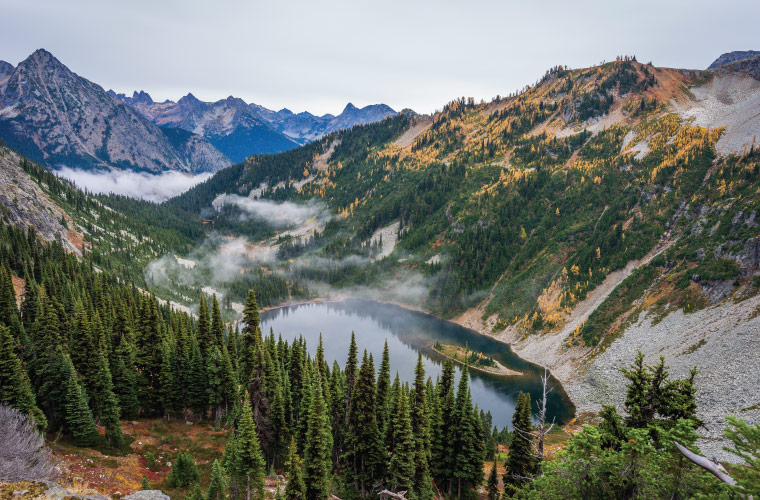
The North Cascade Region was designated a Forest Reserve in 1897 and in 1968, the North Cascades National Park Act designated the area a national park. The North Cascades National Park Act also designated the other two areas of the North Cascades National Park Service Complex— Ross Lake National Recreation Area and Lake Chelan National Recreation Area.
The park covers almost 700,000 acres, with 75 species of mammals and 200 species of birds, not to mention the many (300+!) glaciers, waterfalls, and old-growth forests. It is a difficult and rugged area to explore, which means it’s perfect for adventurous outdoorspeople. But don’t worry—with almost 400 miles of trails, there is something for even the most casual hiker.
Classic Adventures
Most of the hiking trails are along the North Cascades Scenic Highway (SR-20), though one of the best day hikes— Cascade Pass to Sahale Arm—is actually off Cascade River Road. This moderate to strenuous trail is either 7.5 miles or 12 miles round trip, depending on how far you go, but it’s highly recommended to take the longer route all the way to Sahale Glacier. The trail has 3,000 feet of elevation gain, so get an early start and take your time, but look forward to an abundance of wildflowers, and maybe even a bear or two— there are regular sightings along this trail.
The park is so beautiful, visitors can’t really go wrong, but some shorter trails worth checking out are the family-friendly, four-mile round trip Watson Lakes Trail, or the Boulder River Trail, where visitors will find waterfalls just a little over a mile in. For those seeking panoramic views of the Cascade Range and Mt. Baker, the 10.4-mile roundtrip trail to the summit of Hannegan Peak will not disappoint. Thunder Knob is a wonderful, 3.6-mile hike for anyone looking for an easier trip with views of Diablo Lake and the surrounding mountains (and dogs are allowed on-leash!).
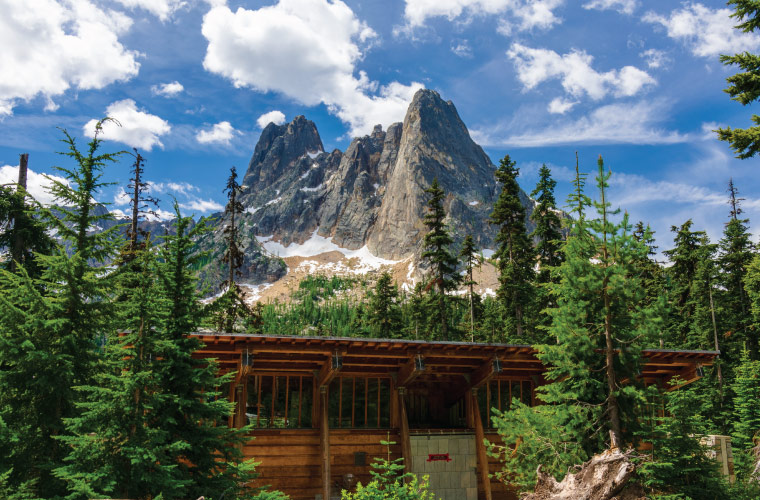
The peaks of the North Cascades are also excellent for alpine trad climbing . There is a lot to choose from, and the lengthy approaches can turn some people away, so it’s the place to go to for solitude. Summer is the best season to climb here, and routes range from the 5.5 Northeast Buttress to the 5.12a Freedom or Death.
Boating on the nearby Ross Lake is another popular activity in the summer, especially because there are 19 boat-in campsites along the shores of the lake, as well as access to the trails along the eastern shore. It can get really gusty out there really quickly, so the best time to go out on the lake is in the morning. The lake is 12,000 acres, and most people paddle 5-7 miles or more in one day.
Secrets of the Park
To get away from the crowds, head to the backcountry. The Upper Stehekin Valley is difficult to get to, so is more for experienced backpackers, but is a trip that you won’t soon forget. Surrounded by peaks and glaciers towering over the forest, including Goode Mountain (the tallest in the park at 9,220 feet), the Bridge Creek Trail is a 12.8-mile segment of the Pacific Crest Trail that runs through the North Cascades National Park. Take a side trip to Goode Ridge (a strenuous, 5-mile detour) for views of the North Cascades as far as the eye can see.
Hidden less than a mile from the Big Beaver backcountry campsite is an impressive, 30-foot waterfall, though only from about mid-March to mid-April. There are often otters, loons, and peregrine falcons taking advantage of the water found here within this short timeframe. To get to the waterfall, hike six miles from the Ross Dam Trailhead, or paddle there. From Ross Lake, paddle five miles to Big Beaver, and the waterfall is about a quarter-mile southwest of the campsite.
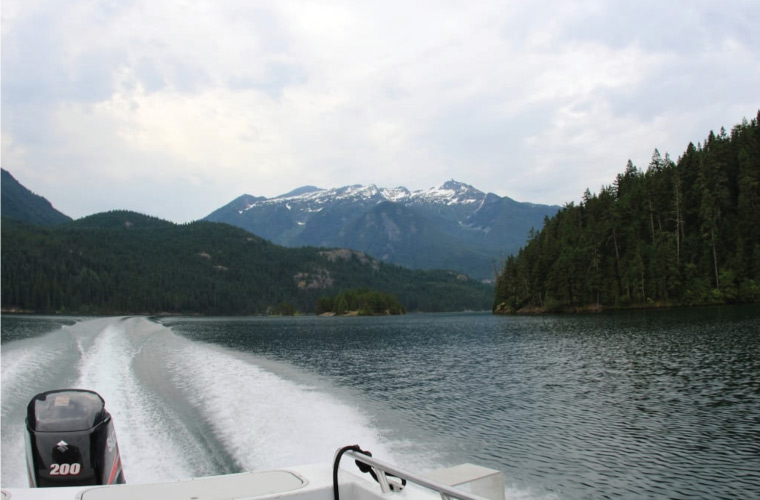
For the best chance to see moose, coyotes, and gray wolves, camp on the west bank of Willow Lake. It’s just north of Ross Lake, and there are even rumors of Sasquatch roaming around here, so keep your eyes peeled!
Immerse Yourself
Whether you camp in the backcountry, at one of the developed campgrounds, or at a boat-in campsite, you’ll want to stay at least a couple days in the North Cascades National Park. Spend a day or two hiking, then another couple days exploring the lakes. Don’t forget your camera though, because between the regular animal sightings and the dramatic views, you’ll definitely want to brag to your friends when you get home!
How to Get the Most Out of Your Visit
- North Cascades National Park Complex is open 24 hours a day, seven days a week. The best time of year to visit the park is from mid-June through mid-September, but make sure you are prepared for summer storms. Snow may hang around on some trails until July. Avalanches tend to cause road closures in the winter.
- Pets are allowed on-leash in most areas, but check the NPS website for rules and regulations before bringing your four-legged friend.
- Some campsites require reservations, and a backcountry camping permit is required for all overnight stays.
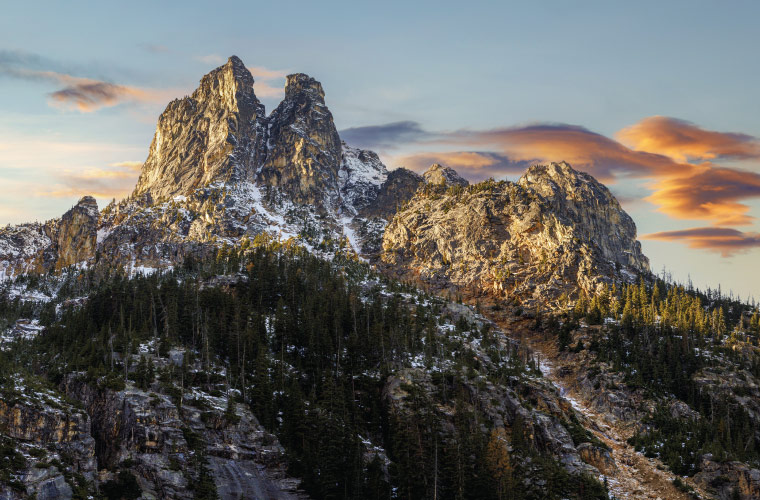
Written by Abbie Mood for RootsRated and legally licensed through the Matcha publisher network. Please direct all licensing questions to legal@getmatcha.com.
Share on:

